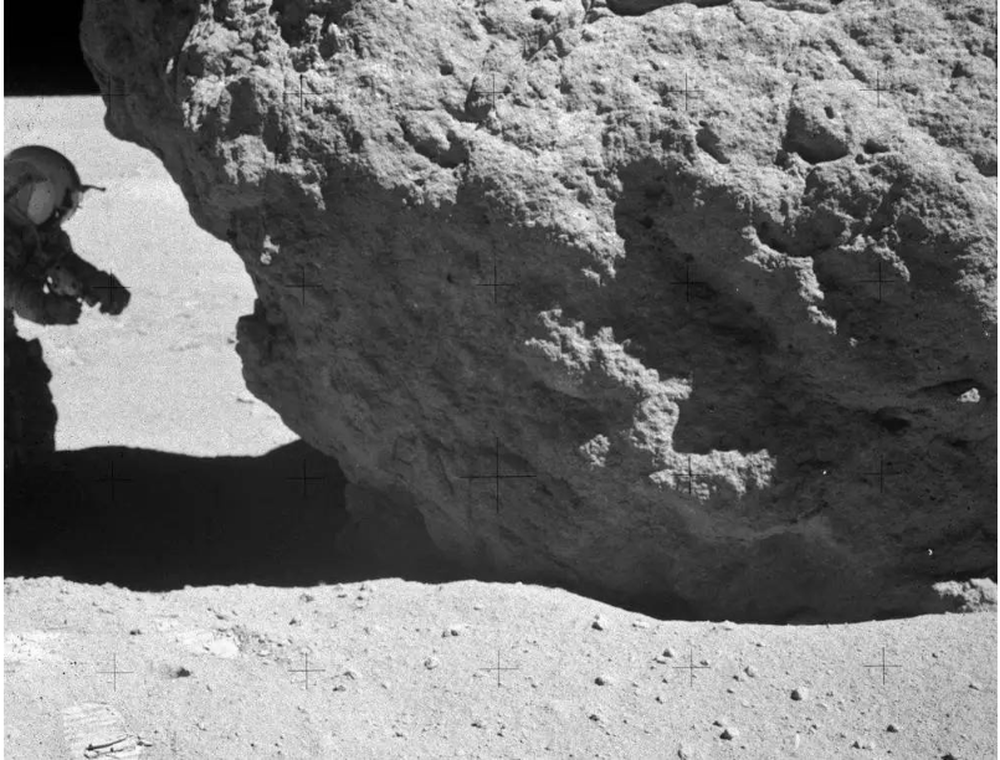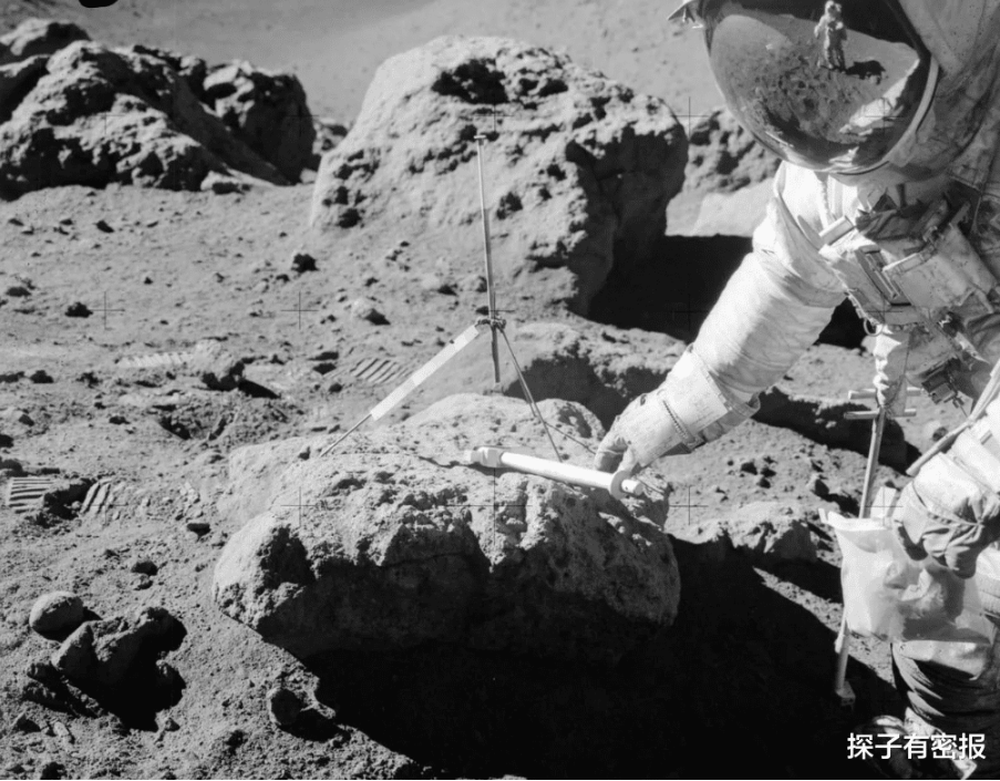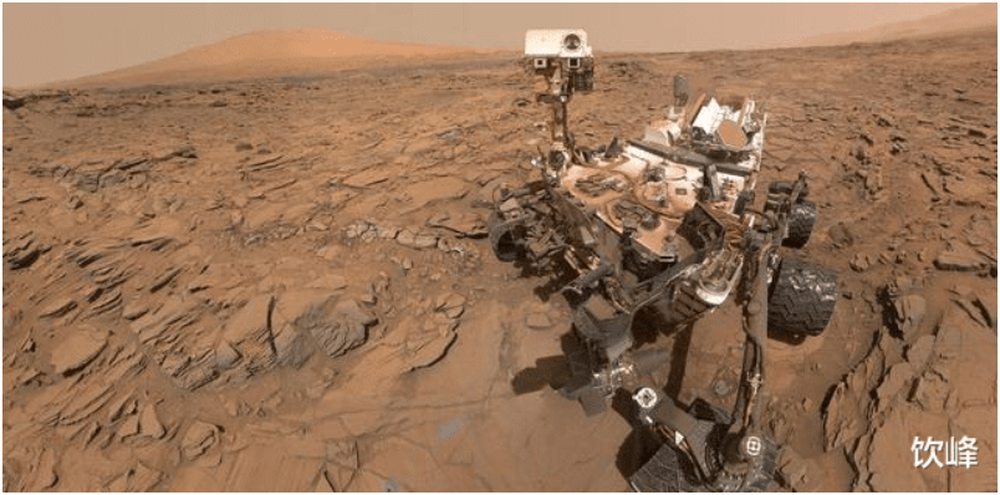Today, with the development of science and technology, people can easily access the universe. We still know that The earth is a planet in the system Sun. In the solar system there are 8 planets but Earth is the only planet with life. On Earth, there are many species of creatures including: sea creatures, terrestrial creatures, amphibians and microorganisms… In which, humans are the most intelligent creatures.
Detecting magnetic energy source Moon
After many years of development, humanity has finally stepped out of the Earth to explore the surrounding planets. However, humanity has only discovered the most that is the solar system. In human history, the Moon is the closest celestial body to Earth and is also the place most “visited” by astronauts.

The moon is the closest celestial body to Earth and is also the place most “visited” by astronauts. (Photo: Baidu)
China’s Chang’e 5 probe successfully landed on the Moon not long ago and carried it sample Earth and Moon rocks. The Chang’e 5 probe returned to Earth on December 17, 2020 with 1,731 grams of samples. The China National Space Administration (CNSA) has delivered some samples to 13 institutions for study.
After analysis, scientists have concluded that the Moon was still a volcano from 2 billion years ago. They also discovered a very important source of energy on the Moon from these samples. This energy source is helium-3. Many people may not know what the role of helium-3 is. Helium-3 is a light, non-radioactive helium isotope with two protons and one neutron. Many scientists think helium-3 is a future energy source. Helium-3 can have many applications in life and one of them is fusion energy.
They say helium-3 could provide safer nuclear power in a fusion reactor. Because unlike other nuclear fusion reactions, the fusion of helium-3 atoms release a huge amount of energy without causing the surrounding material to become radioactive.

From samples taken from the Moon, scientists have found a new source of energy. (Photo: Baidu)
Scientists have estimated that the reserves of helium-3 on Earth are only about 500 kg, while the Moon contains at least 1 million tons of helium-3. The source of helium-3 in the Moon will provide enough energy for humans on Earth for more than 10,000 years. For decades, human fusion reactors have been plagued with various technological obstacles. Therefore, the abundant supply of helium-3 from the Moon is an important factor in helping the “game” change.
The reason the Sun can burn for 10 billion years is because of nuclear fusion in its core. According to scientists’ research, the Sun fuses the nucleus of hydrogen into helium. The four hydrogen nuclei inside the Sun’s core fused into one helium atom. Every second the Sun synthesizes about 600 million tons of hydrogen into helium in its core, and as a result, 4 million tons of matter is converted into energy.

Not only exploiting resources on the Moon, scientists also plan to search on Mars and Venus. (Photo: Baidu)
Every time the four hydrogen nuclei inside the Sun’s core merge, its mass will lose 0.0276 units, equivalent to a loss of 0.0069 units / 1 gram of hydrogen. This lost mass will be converted into energy and then absorbed by other celestial bodies. The energy that the Earth can receive in 1 second from the Sun is about 2.2 billion points.
Scientists say we should not underestimate the 2.2 billion points of energy that Earth receives from the Sun because this is equivalent to the total energy obtained from burning 1 million tons of coal on The earth. So the energy produced by nuclear fusion is huge. That’s also why scientists are conducting research into controllable nuclear fusion.
Danger from samples found on Mars
In the future, with the advancement of technology, people can easily exploit the resources on the Moon, even Mars and Venus. However, the surface temperature of Venus is about 460 degrees Celsius. At such high temperatures, life cannot exist at all. So scientists decided to move the energy extraction to Mars because the planet’s environment is much better than Venus’s.
But first, they must also take samples from Mars for research. United States space agency (NASA) planned to bring soil and rock back from Mars to Earth. However, some scientists protested because they thought that alien viruses could also enter through these samples and cause harm to the Earth.

Scientists are concerned that objects living on the surface of Mars could harm Earth if they bring back samples. (Photo: Baidu)
They argue that while Mars is cold today, it resembles the early Earth. Geomorphology on Mars records liquid surface water activity, perhaps as early as 3.9 billion years ago. And water has always been considered by them as the source of life.
According to research just published in the journal Science, led by NASA astronomer Amy Williams has identified similarities between the Jezero impact crater on Mars, which was actually once a rich river delta. like the river deltas of the Earth. The shape of the bottom 3 layers suggests the presence of a very early steady stream of water. They concluded that Mars was warm and humid enough to support a hydrological cycle 3.7 billion years ago.
In addition, the discovery of a lake beneath the ice cap at the south pole and methane in the Martian atmosphere (which varies by season and even time of day) further proves that Mars became habitable. Methane is important because it can be produced by biological processes.

Although they consider this risk low, it is not impossible. (Photo: Baidu)
Many scientists have reminded NASA that they need to make sure that there are no space viruses that can infect Earth. Peter Doran, a geologist at Louisiana State University said: “I think the probability of a living object on the Martian surface is very low. But still have to watch out for all possibilities.”
Responding to this suspicion of many scientists, NASA said they will not ignore even the smallest danger warnings. The space agency has been planning to return rock samples to Earth as early as 2030. NASA has also announced that it will disinfect all samples, including any containers or contacts ever used on Mars.
* General article based on information from sources Sohu, Esa, Nasa, Space
at Blogtuan.info – Source: Soha.vn – Read the original article here



